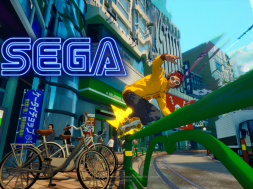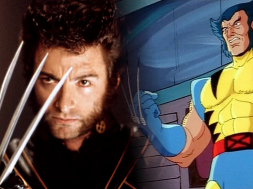 7
7 Catherine is a game that I’ve been tangentially aware of since the original release back in 2011/2012. However, despite being a fan of Atlus based on their other work, I wasn’t really aware of the content of the game. I never owned a platform on which I could play it, so I never felt a desire to look too much into it. My limited knowledge was as follows: It had great art. It was weird by most accounts. That was it. I had no idea what the story was, what the gameplay was like, or why it was anecdotally referred to as ‘weird’.
So, with that all said, I was pretty curious to give it a spin once the Full Body edition made its way to a more diverse platform base. (Partially because it gave me some hope that we might see the same for Persona 4 Golden, which we did… But I’m still holding out for a Switch port!)
Bedtime Stories
Catherine follows Vincent Brooks, a guy going through something of a mid-life/romantic crisis, and how he chooses to deal with it. At the crux of his crisis is Katherine, the woman he is dating who is pushing for more commitment from him. Compounding this internal conflict is that one morning after an amnestic night-before, he wakes up with another woman named Catherine. Further complicating his feelings is the appearance of Rin, a brand new character added to the Full Body release.
In the background of this, there is a rumour of a local curse which causes people to die in their sleep, frequently tied to men who are immoral or have cheated on their partners. Lo and behold, Vincent starts having some pretty weird Nightmares wherein he has to climb to the top of a tower in order to free himself from some version of hell. As he approaches the end of each night, some horrific monster, invariably tied to some quandary he faced during the day, appears below, chasing him to the top. Between each of these stages, he finds respite on a small plateau populated with…. Sheep. But they’re not sheep, or at least, they don’t think they’re sheep. It’s everyone else who’re sheep. Uh huh.
In the evenings following each of these Nightmares, Vincent can be found at the local watering hole, the Stray Sheep. There, he meets up with some of his mates to complain about life. Then his crappy friends will tell crappy jokes and complain about their own crappy lives, or alternatively talk about how they’re getting on far better because they’re great. Listening to it gets old pretty quickly, and I sincerely hope that’s the entire point. Though the game spends so long focusing on these conversations with little change in tune that this message, if it’s the intention, gets lost. I feel part of the flaw in this could have been fixed by making Vincent and his buddies younger. A large proportion of their conversation, coming from guys in their 30s is, to be frank, pathetic. Throwing them back to their early 20s would make it all seem far more reasonable, and could have done the same for some other aspects of the story, but I’ll avoid mentioning those for reasons of spoilers. Again, given that it occurs between each level, it would still be tiresome to slog through, but it would at least be more reasonable to expect.
…Perchance To Dream
Before I sat down with Catherine: Full Body I’d assumed that it would be some form of RPG with a quirk, something akin to Paper Mario for example. I was completely off the mark. Catherine is a pure puzzle game.
The core gameplay involves manipulating blocks in order to climb to the top of a tower, with a goal of escaping Vincent’s nightmare. If I were forced to compare it to something I might say Q*bert, or Thomas Was Alone? But only insofar as one game involves traversing blocks with some amount of forethought, and the other involves making clever use of some basic mechanics. There’s nothing out there to realistically compare it to, and that’s likely why it has captured so many fans. In Catherine, Vincent has the ability to push, pull, climb or hang from a block. That’s it. There are no special powers you unlock as you go along, except in the form of optional, one use items. As time passes, the lowest level of blocks will fall to oblivion and if Vincent can’t climb swiftly enough, he’ll join them, resulting in his death if reports of the curse are to be believed.
Outside of the core puzzling, there’s a social element to the game. This is tied to the times when Vincent visits the Stray Sheep. There, he can chat to his friends and some other patrons. Largely this is to progress the story, but some of the patrons will pose questions to Vincent that can affect a Order/Chaos meter, or offer information that can help later. Some choices Vincent makes as the story progresses will be determined by the level of his Order/Chaos meter. While in the bar he can also choose to have a drink, which will affect his performance during the Nightmare stages. Between the Nightmare stages there are short reprieves where Vincent can talk to other sheep and share tactics for climbing, or answer more questions, again potentially affecting the Order/Chaos meter.
The core puzzling I found extremely engaging, though the controls felt finicky at times. Sometimes moving to climb up a block would result in crawling around to the side, or a slight movement would shift the camera into a ‘more helpful’ position. I’m willing to chalk that up to my own failure, but I never got used to it, even towards the end of the game. The other mechanics I found to be less engaging, especially when compared to social elements in other Atlus games. The Order/Chaos questions seemed pretty arbitrary at times, but also I’m willing to put this as a common failing of many binary morality systems commonly featured in games at the start of the decade. It’s just a shame they didn’t give it more of an update with some of the other features.
One of the other things that rankled me, and I’ll admit to nit-picking on this, is the blatant illusion of choice in some cases. The arbitrary Order/Chaos questions are one example, but another more tied to gameplay example is that while you have the option of drinking each night, you can choose not to, but the game will proceed with Vincent being chastised for getting hammered every night, or alternatively with him blaming his drunkenness for his actions.
Full Bodied
The art for Catherine is excellent, as I’ve come to expect from Atlus titles. Shigenori Soejima‘s art has always been a draw for me and is likely half of the reason Catherine was on my radar at all. If I found the personalities of various characters bland or unlikable, the designs are anything but. Vincent’s scruffy hair and boxers are one thing, but to have other characters given their own design, and then being able to pick out one key piece to clearly identify them as sheep is just a great touch. To achieve this without having those aspects be glaringly obvious or reduced to caricature in human form really speaks to the art team’s eye for design. I’d go into some of the boss designs, but really those are best seen with your own eyes for the first time. To describe them here would take away from those moments in the game.
Likewise, the music is phenomenal. Again, no surprise coming from a Shoji Meguro and his work on other Atlus games. I found it comical that one of the running jokes is how poorly one character plays the piano, when some of the piano tracks played by them, even when played poorly, still sounded fine to my ear. The tracks that play in the bar are slow and chill, while the nightmare levels take on much more operatic tones that you’d associate with this sort of horror.
As an added bonus, Catherine: Full Body includes tracks made popular in other Atlus titles and can be chosen from an in-game jukebox. It was a nice moment to sit through one of the bar scenes with some music from Persona 5 playing for a bit of nostalgia.
Weird Al-tlus
Altogether I can honestly say that Catherine: Full Body is just as weird as I was led to believe. At a purely surface level, the dark/erotic story and tone is enough to qualify it for that, but it goes deeper. For one, I haven’t been so addicted to a home console game centered on a single puzzle mechanic in an extremely long time. In addition, I can’t remember ever being so invested in a game that focused so heavily on characters that are almost entirely unlikable. Not just flawed, but genuinely not nice.
Being ‘weird’ isn’t enough on it’s own to make a game good or even enjoyable though. To that end, I would say that Catherine’s gameplay is engaging and I’d love to see the mechanics make a return in a future title. Even as a side-story or mini-game in the next Shin Megami Tensei or Persona title would be enough to satisfy me. The story, on the other hand, did take time to draw me in. I was probably more than halfway through the main story before I got past my dislike of the main character or general drudgery of elements that weren’t the core puzzling, and got sucked into the rest of the mystery. Even then, returning to these same conversations between levels continued to be monotonous. On the other other hand, Catherine’s brevity does it a favour here. After a few hours I was done with it and enjoyed what I had experienced, but had the game dragged for 50 or even 30 hours, I doubt I would have stuck it out.
Catherine: Full Body is available now for Nintendo Switch.
Overall, Catherine is great for what it is. If you have a gap in titles you want to play, or are looking for something shorter to bridge between bigger titles, or even just something bizarre to change things up a little, I'd say it's well worth checking out. If you've already got a solid list of short, weird or otherwise experimental titles to try out, it's a bit harder to quantify, but is probably still worth adding to that list at some point.










